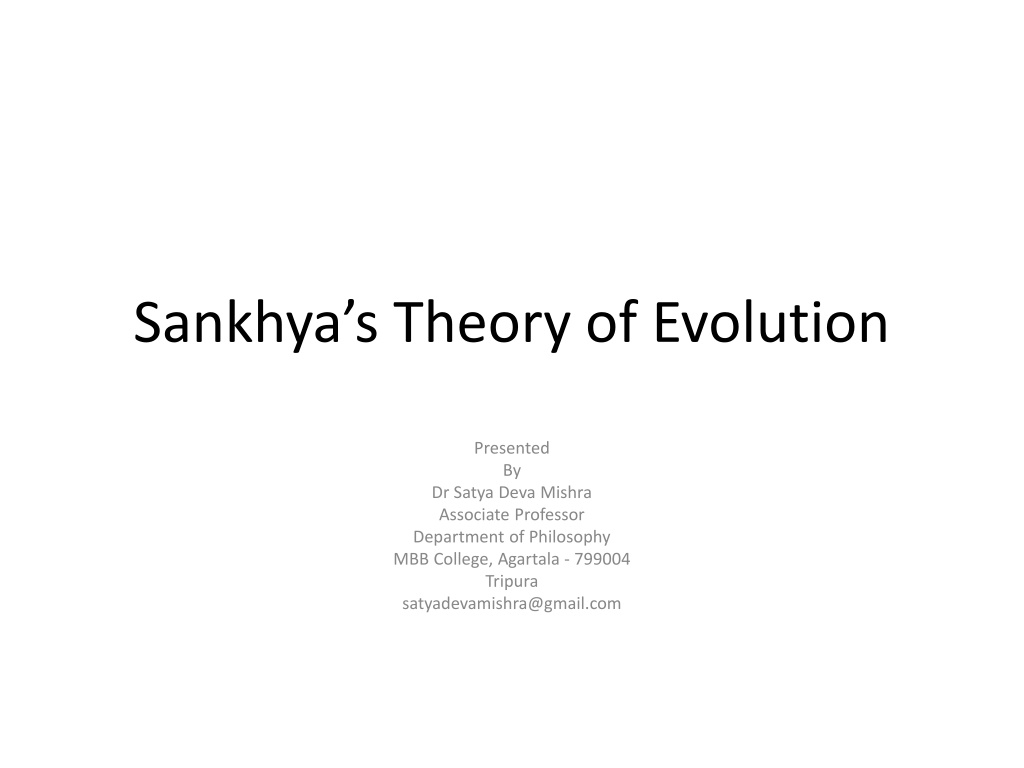Sankhya's Theory of Evolution Explained by Dr. Satya Deva Mishra
Explore the Sankhya philosophy's theory of evolution as presented by Dr. Satya Deva Mishra, covering concepts such as Prakrti, Purusa, theory of causation, evolutes of Prakrti, and the purpose of evolution towards liberation and self-realization.
Download Presentation

Please find below an Image/Link to download the presentation.
The content on the website is provided AS IS for your information and personal use only. It may not be sold, licensed, or shared on other websites without obtaining consent from the author. Download presentation by click this link. If you encounter any issues during the download, it is possible that the publisher has removed the file from their server.
E N D
Presentation Transcript
Sankhyas Theory of Evolution Presented By Dr Satya Deva Mishra Associate Professor Department of Philosophy MBB College, Agartala - 799004 Tripura satyadevamishra@gmail.com
Introduction Meaning of word Sankhya Sankhya as the oldest system Literature of Sankhya Sankhyakarika and its comentries
Prakrti Nature of Prakrti Proofs for the existence of Prakrti Gunas: Sattva, Rajas and Tamas
Purusa Nature of the Purusa Proofs for the existence of the Purusa Plurality of the Purusa
Theory of Evolution Theory of causation Contact of Purusa and Prakrti Cyclic and Teleological evolution Homogeneous and Heterogeneous change of Prakrti
Evolutes of Prakrti Mahat (intellect) Ahankara (ego) Manas(mind), Five Jnanendriyas(sensory organs), Five Karmendriyas(motor organs) Five Tanmatras (subtle elements) Five Mahabhutas (gross elements)
Conclusions Evolution is the transformation of Prakrti into physical things and the psychical apparatus for the experience of the bound souls. The evolution is teleological. Every things works to serve the purpose of the Purusa though unconsciously. This purpose(end) experience (bhoga) or liberation (apavarga). It is only knowledge which leads to liberation because bondage is due to ignorance and ignorance can be removed only by knowledge. The Jiva has to realize itself as the pure Purusa through discrimination between Purusa and Prakrti. Purusa is free and pure consciousness; when it realizes its own pure nature , it gets liberated which in fact it always was. In this manner the purpose of evolution is achieved its goal. is either worldly
























